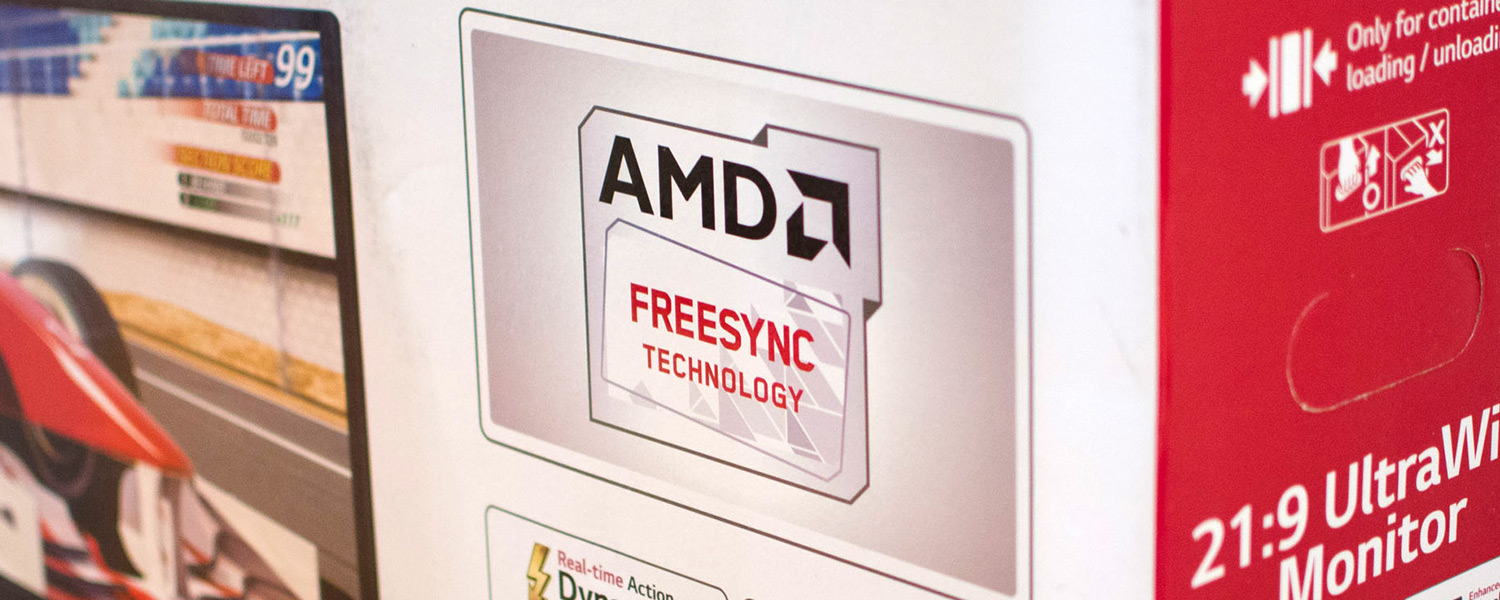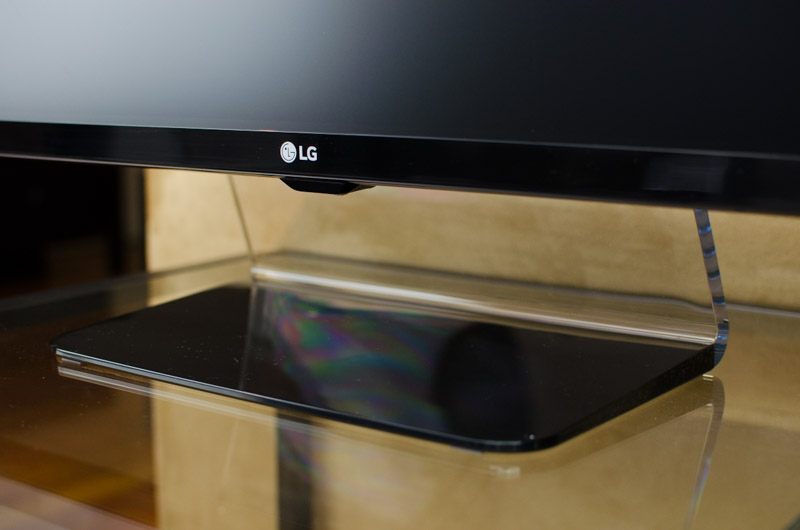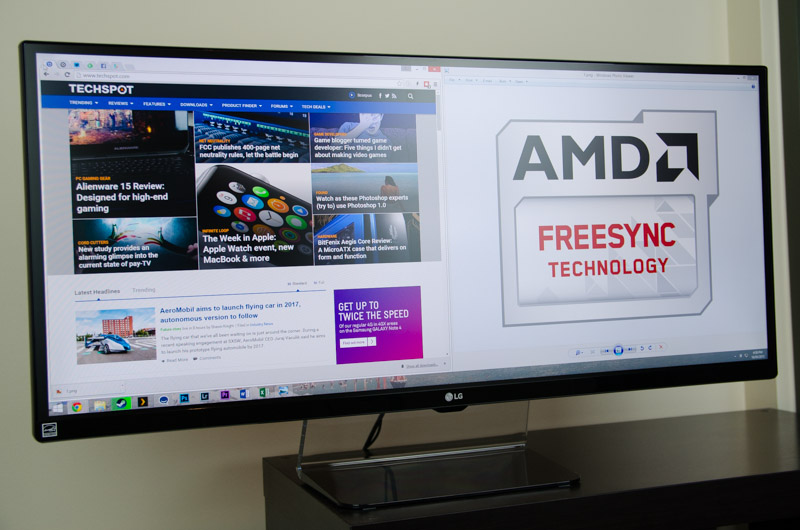A Brief Look at LG's 34UM67
The LG 34UM67 is the company's new mid-range ultrawide monitor, with a 21:9 34-inch IPS LCD display with a resolution of 2560 x 1080. Higher-end ultrawide displays with 3440 x 1440 displays are available from LG, though those currently don't support FreeSync. And speaking of FreeSync, this monitor supports variable refresh rates of 48 Hz to 75 Hz.
There are two things to note about the 34UM67 that affect how it works with FreeSync. The first is that there is no DisplayPort cable in the box, only HDMI, so if you wanted to use FreeSync straight away, you're going to need to purchase a DisplayPort cable separately. Secondly, FreeSync is actually disabled by default in the monitor's settings; if you're struggling to get FreeSync working, this could be the reason why.
The 34UM67 is a plain monitor that uses a combination of glossy and matte black plastic. The display area is protected by matte plastic, so you don't get as many reflections irritating you during gaming, at the expense of higher color quality. Everywhere else - including the back of the monitor, a strip below the display, and the stand - uses glossy plastic, which is a massive dust and fingerprint magnet that you'll struggle to keep clean without constant wiping.
I wouldn't say this monitor is hugely attractive, and LG hasn't really done anything that makes its design stand out from the crowd. I liked the inclusion of a partly-transparent L-shaped stand, which makes the display look like its floating from some angles, though it would be nice to see slightly smaller bezels for the multi-monitor users out there.
The stand itself is strong but inflexible, only supporting tilt for a small but adequate range of angles. This means there's no height adjustment, a feature you would get from a higher-end display. Understandably, as this is a 21:9 monitor, there is also no rotation support.
All the ports for this monitor are located in the center of the back panel, just above the stand. You get a single DisplayPort (required for FreeSync) as well as two HDMI ports, one of which is at right-angles with the monitor for tighter wall mounting (and yes, the 34UM67 has VESA mounting holes). There's also 3.5mm audio in and out, as well as a power jack that connects to the external power brick. The reasonably rubbish speakers are located along the bottom edge of the display.
The monitor's on-screen display (OSD) is controlled by a directional toggle that doubles as a power button, found in the center of the bottom edge, below the power LED. It's not obvious that this toggle is how you control the OSD, but when you get the hang of it, it's a remarkably good control system. Throughout the OSD you'll find the usual options such as color, brightness and contrast controls, pixel response settings, a special gaming mode, and more. As I was most interested in testing FreeSync, I didn't bother seeing what most of the settings did, although it seems like you get a reasonable selection of controls.
I don't have much information on the panel itself, other than it's a 21:9 34-inch IPS-class display at 2560 x 1080, which equates to 81 pixels per inch. This is definitely not a high-resolution display with pixel density close to that of a 27-inch 1080p display, though I found it to be fine for productivity and gaming. Ideally I would love a higher resolution display to go with FreeSync, but this would cost quite a bit more than the 34UM67, which retails for $650.
The IPS-quality display does look great for viewing photos and movies, especially those that are filmed in a 2.39:1 aspect ratio (although there will be upscaling if it's a Full HD copy). From what I can tell, color saturation is excellent, as are contrast ratios, though black levels aren't as good as I've seen from top-of-the-line displays. The display is also very bright on its maximum brightness level, and has relatively good viewing angles, although not without a degree of contrast shift at acute angles.
21:9 is an interesting aspect ratio for a monitor, and this was the first real time I've spend with one as my daily driver. While I normally rock three 16:9 monitors, which is great for productivity, a single 16:9 monitor allows you to easily have two applications open side-by-side without feeling restricted by horizontal space. In fact this is a recommended use case for a monitor like the 34UM67: a single app maximized across the entire display looks way too big, but two apps side by side feels normal after a few days of use.
For gaming, the experience you get from a 21:9 monitor is excellent. I typically game across my three displays via Eyefinity, which gives me an immersive experience with fantastic peripheral vision that occupies my entire field of view. 21:9 gaming is the next best thing, and it's much more accessible to an average gamer, both on a setup side (Eyefinity is often buggy) and a performance side. The extra width you get from a 21:9 monitor in games makes it feel more immersive than 16:9 or 16:10, especially when the monitor itself is 34-inches large.
There are still some compatibility issues with 21:9 in games, with some games not supporting the aspect ratio at all and either cropping to 16:9 or zooming in. However you'll find that many games, especially newer ones, run fine at 16:9, and that will only increase in the future.












